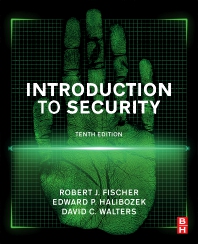New report analyzes new and dangerous trends of disinformation in wake of U.S. Capitol attack

The aftermath of the Jan. 6 attack on the United States Capitol has led to the emergence of a new broad, anti-government conspiracy theory spreading on social media that is dovetailing with anti-vaccination and anti-public health extremism, according to a new report by Rutgers’ Miller Center for Community Protection and Resilience.
The report, by faculty and student researchers published as a joint project between the Miller Center and the Network Contagion Research Institute (NCRI), chronicles the growth of a conspiracy theory about a coming “New World Order” through a totalitarian world government. Proponents of the new conspiracy theory are using social media as a mechanism to attach this belief system to other existing conspiracy theories in an effort to virally spread disinformation to the masses.
“The research undertaken by Rutgers faculty and students, in cooperation with the Network Contagion Research Institute, has established that in the wake of the January attack and the subsequent deplatforming of QAnon and other extremist groups, extremists have migrated to a broader umbrella conspiracy,” said John J. Farmer, Jr., director of both the Miller Center and the Eagleton Institute of Politics at Rutgers University-New Brunswick. “Although their agenda to undermine institutional trust remains the same, the focus has shifted from election disinformation to disinformation about the COVID-19 vaccines and to hate speech directed at Asians, Jews, and other vulnerable populations.”
A Contagion of Institutional Distrust: Viral Disinformation of the COVID Vaccine and the Road to Reconciliation is the inaugural project of the Network Contagion Research Lab at the Miller Center, which engages student researchers to gain a deeper understandings of how conspiracy theories operate online to exacerbate institutional distrust.
“Our research demonstrates a growing contagion of institutional distrust that has created a demand for conspiracy,” said Joel Finkelstein, director of the Network Contagion Research Institute and senior research fellow at the Miller Center, who is directing the joint project. “If we don't restore trust to our democracy and one another, the road to public health and political reconciliation alike are in jeopardy.”
The report outlines five key findings:
-
- In the wake of the election and events of Jan. 6, articles and memes containing the term “New World Order” and other anti-government and anti-“globalist” symbols not only exploded on fringe Web communities and fake news platforms but surged across mainstream platforms, making them more available to the general public.
- “New World Order” and other anti-government and anti-“globalist” online content spiked in tandem with vaccine distribution disruption during an anti-vaccine protest at Dodger Stadium.
- Anti-government and anti-“globalist” content on social media increasingly includes anti-restriction and anti-vaccine content.
- NCRI analysis indicates three indicators of anti-restriction and anti-vaccine protests at the county level. They include a county’s history of intimidating counterprotest activity running concurrent with Black Lives Matter protests, the severity of covid restrictions (such as enforced lockdowns) and searches for “New World Order” on Google.
- NCRI aggregates data sets both in the real world and online to perform a geographically weighted regression which provides a spatial model for anti-restriction and anti-vaccine protests for counties across the U.S.
“The student researchers were absolutely instrumental in this research. They designed maps, performed quantitative analysis and machine learning procedures, and undertook open-source investigations, all of which fundamentally informed the conclusions and findings of our research,” said Finklestein.
This report is published by the Network Contagion Research Institute and the Miller Center for Community Protection.
The Miller Center, affiliated with Rutgers University’s Eagleton Institute of Politics and Rutgers Law School, works with vulnerable communities around the world to enhance their safety and standing in society by improving their relationships with law enforcement, with other government agencies and with other vulnerable communities.
Looking for a reprint of this article?
From high-res PDFs to custom plaques, order your copy today!







